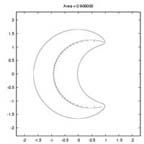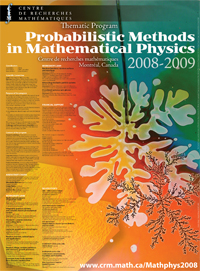This workshop is devoted to mathematical aspects of Laplacian growth. A broad class of non-equilibrium growth processes have a common law: the normal velocity of the growing boundary of a region is proportional to the gradient of a harmonic field on the exterior. This type of growth (called Laplacian growth) is unstable for nearly all initial configurations. Instabilities develop into fractal singular patterns. Similar instabilities occur in the hydrodynamics of immiscible fluids.
In recent years it has been recognized that the theory of Laplacian growth is deeply related to a number of modern branches of mathematical physics and mathematics. Among these are fundamental aspects of complex analysis, deformations of Riemann surfaces, integrable systems and the theory of random matrices. Connections between the Laplacian growth problem and Random Matrix Theory lead to new interrelations between probability theory, singularities in hydrodynamics and conformal analysis.
Scientific Organizers
- N. Makarov (Caltech)
- P. Wiegmann (Chicago)

The zeroes (crosses) of the orthogonal polynomials - up to degree 54 - in the plane for a measure with a repulsive charge at z=1. The bean-shaped region is the support of the asymptotic equilibrium distribution and the line extending between the two apices is the skeleton (mother-body) of the domain. The gro wth of this region follows the Laplacian-growth evolution, the area increasing linearly in time.

